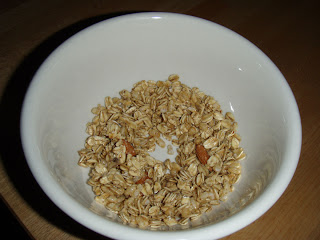 |
| Fear in a box |
Like a modern day Marlow, I’ve ventured into the heart of
America, literally and figuratively. Yesterday we travelled 800 miles across
New Mexico, Oklahoma and Kansas, into the deepest middle of America, US Route
56 my Congo River: it was all those things you imagine about prairies and
plains and dustbowls. And today I ate Froot Loops.
On the literal front, the heart of America is not at all
dark. It’s surprisingly beautiful (although perhaps it would get boring after a
while) – big wide expanses, the mountains changing to rolling hills slowly
flattening out as we headed east; immense grasslands with the occasional
windmill presiding over them. The people were friendly. And the sky was huge -
an immense canopy of blue and brightness.
On the figurative front, though, the heart of America is
black. Anywhere that can dream up the Froot Loop, let alone sell it, let alone
choose to buy and eat it, is a sick, sick, sick place. It’s wrong in the head,
wrong in the soul. The very fact of Froot Loops makes me scared to be in this
country.
My expectations were low, very low - sufficiently low that I
chose the lobby of a Hampton Inn to experiment with this monster. I pretty much
knew that I had no desire to buy or eat an entire pack, and the hotel kindly
offered a mini-pack. The name and colours told me that it would be deeply fake
and suggested it would be deeply unpleasant.
 |
| Fear in a packet |
My prejudices were entirely correct. Except that the colours
were perhaps more hideous than I’d even thought from the packet and the
advertising. Luminous and yet washed out. The packet advertises “Good source of
fiber” and “Made with whole grain”, as if this is a health food. You can tell
how healthy Froot Loops are going to be by checking out the ingredients list.
Item number one, the main ingredient, is “Sugar”. How can you actually make
something that stays stable in milk rather than dissolving when it’s made
primarily out of sugar? There has to be some brilliant industrial chemistry at
work – unfortunately, brilliant chemistry doesn’t always mean “nice” or
“tasty”. Perhaps that chemical stabiliser is “Froot”. Froot certainly bears little
resemblance to the similarly pronounced “Fruit”.
 |
| Leopold II in a bowl |
So how do they taste? Nasty. Immensely, immensely nasty.
Unutterably nasty. Vile. Hideous. They are quite lightweight and dry, like a
dehydrated sponge mixed with cardboard. But the texture isn’t the big problem.
The problem is the flavour. They taste a bit like fruit flavoured sweeties,
like Starburst or Refreshers in the UK. Except weaker, washed out – it has all
of the bad flavour, but somehow watery and more chemical. Yet it manages to get
worse, because now you’re putting dry, bad, washed out Starburst, with none of
the acid you’d actually like from fruit that gives it life, into milk. Why? Why
oh why oh why? What would possess you? What kind of sick, diseased nation would
produce this?
 |
| The author after a mouth full of cereal hell |
Like some 19th century European observer seeing
the Congo Free State as a glorious, highly productive nation indicating what
might come from the future of Africa, unaware of what was going on in the
interior, people outside might see the US as a global superpower, the home of so
much of the music we listen to, of movies, of awesome scenery, of hamburgers
and hot dogs, of almost all the technological innovation we see, of space
travel and air travel, a wonderful, magical awesome country. But they don’t see
that this is a country that eats Froot Loops.
One positive note: for once the “portion size” is not too
small. There is no way that any human could eat an entire portion of this
stuff.
Wow. That is all. Wow.
The scores, should we need them:
Culinary Integrity: 0. Nil. Nothing. Zilch. Blegh.
Fun: 0, again. There’s just nothing redeeming at all.
Bonkers Americanness: 10. Full marks for insanity. Look at
the colours. Think about what kind of person would even try and create this. It
is the work of a crazed evil genius.













 One thing I’ve found since getting to America is how easy some things that used to be difficult are, and how difficult some things that used to be easy are. Recent experiences highlight both ends of that spectrum.
One thing I’ve found since getting to America is how easy some things that used to be difficult are, and how difficult some things that used to be easy are. Recent experiences highlight both ends of that spectrum.